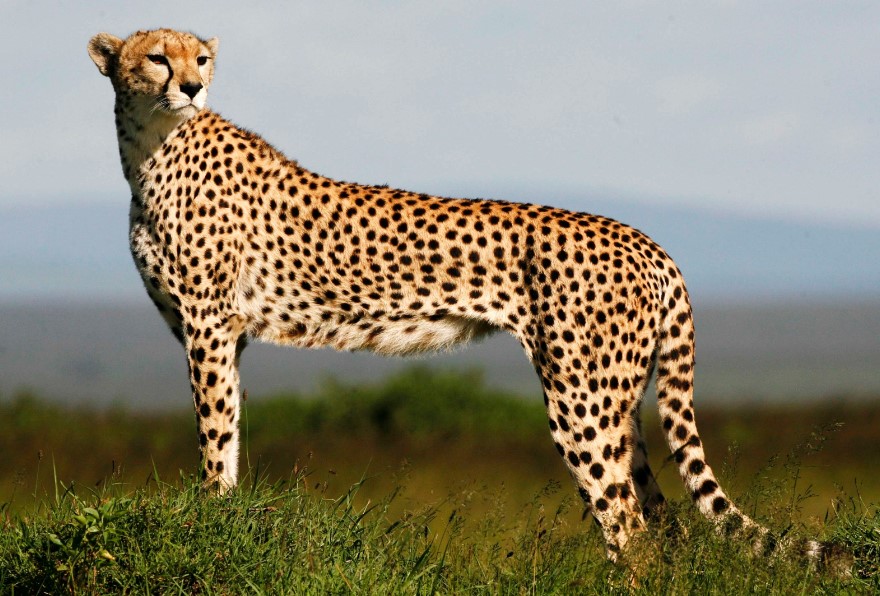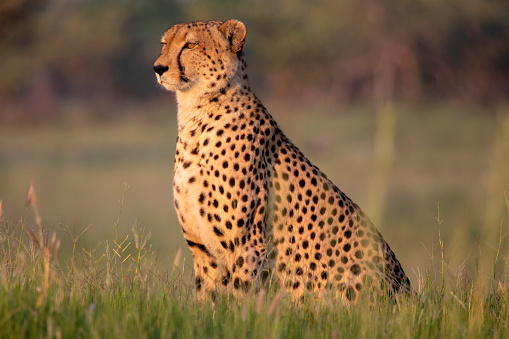






The cheetah is a large cat native to Africa and central Iran. It is the fastest land animal, estimated to be capable of running at 80 to 128 km/h with the fastest reliably recorded speeds being 93 and 98 km/h, and as such has several adaptations for speed, including a light build, long thin legs and a long tail.
CW mission is to be the internationally recognized center of excellence in the conservation of
cheetahs and their ecosystems. CW will work with all stakeholders to develop best practices in research,
education, and land use to benefit all species, including people.
CW vision is to see a world in which cheetahs live and flourish in coexistence with people within a
sustainable system that is protective of the environment, socially responsible, and economically viable.
There are three stages in the life cycle of the cheetah: cub (birth to 18 months), adolescence (18
to
24months) and adult life (24 months and on).The gestation (pregnancy) period for the cheetah is 93 days, and
litters range in size from one or two up to
six cubs (the occasional litter of eight cubs has been recorded, but it is rare). Cub mortality is higher in
protected areas like national parks and wildlife reserves where proximity to large predators is greater than
in non-protected areas. In such areas, the cheetah cub mortality can be as high as 90%.
Adult life for a cheetah in the wild is difficult. Cheetahs in the wild (both male and female combined) have
an average age span of 10 - 12 years. The average lifespan of an adult male in the wild skews lower (8
years), due in part to territorial conflicts with competing groups of males. Adult mortality is one of the
most significant limiting factors for the growth and survival of the wild cheetah population.
Adult cheetahs’ weight averages between 75 and 125 pounds. They can measure from 40 to 60 inches
in length,
measured from the head to the hind quarters. The tail can add a further 24 to 32 inches bringing the total
overall length up to 7.5 feet. On average, cheetahs stand 28 to 36 inches tall at the shoulder.
The cheetah is a sexually dimorphic species though it is difficult to identify cheetahs’ sex by appearance
alone. Male cheetahs are slightly bigger than females and they have larger heads, but they do not display
the same degree of physical difference between the sexes of other big cat species like lions.
Cheetahs have a thin frame with a narrow waist and deep chest. They have large nostrils that allow for
increased oxygen intake. Cheetahs have a large lungs and hearts connected to a circulatory system with
strong arteries and adrenals that work in tandem to circulate oxygen through their blood very efficiently.
With its long legs and very slender body, the cheetah is quite different from all other cats and is the only
member of its genus, Acinonyx. The cheetah’s unique morphology and physiology allow it to attain the extreme
speeds for which it’s famous.
The cheetah’s undercoat ranges in color from light tan to a deep gold and is marked by solid black
spots.
These spots are not open like the rosettes found on a leopard or jaguar’s coat, which is one way to quickly
identify the cheetah.
Distinctive black tear stripes run from the eyes to the mouth. The stripes are thought to protect the eyes
from the sun’s glare. It is believed that they have the same function as a rifle scope, helping cheetahs
focus on their prey at a long distance range by minimizing the glare of the sun.
Cheetah tails end with a bushy tuft encircled by five or six dark rings. These markings provide them with
excellent camouflage while hunting and make them more difficult for other predators to detect. The tail is
also thought to be a signaling device, helping young cubs follow their mothers in tall grass. The tip of the
tail varies in color from white to black among individuals.
The prey species on which the cheetah depends have evolved speed and avoidance techniques that can
keep them
just out of reach. Cheetahs prey includes: gazelles (especially Thomson’s gazelles), impalas and other small
to medium-sized antelopes, hares, birds, and rodents. Cheetahs will also prey on the calves of larger herd
animals.
Cheetahs generally prefer to prey upon wild species and avoid hunting domestic livestock. The exception
happening in sick, injured and either old or young and inexperienced cheetahs. Generally, the livestock
animals that are lost to predation by cheetahs are also sick, injured and old/young. Keeping livestock in
kraals and utilizing non-lethal means of protection can dramatically reduce livestock predation.





